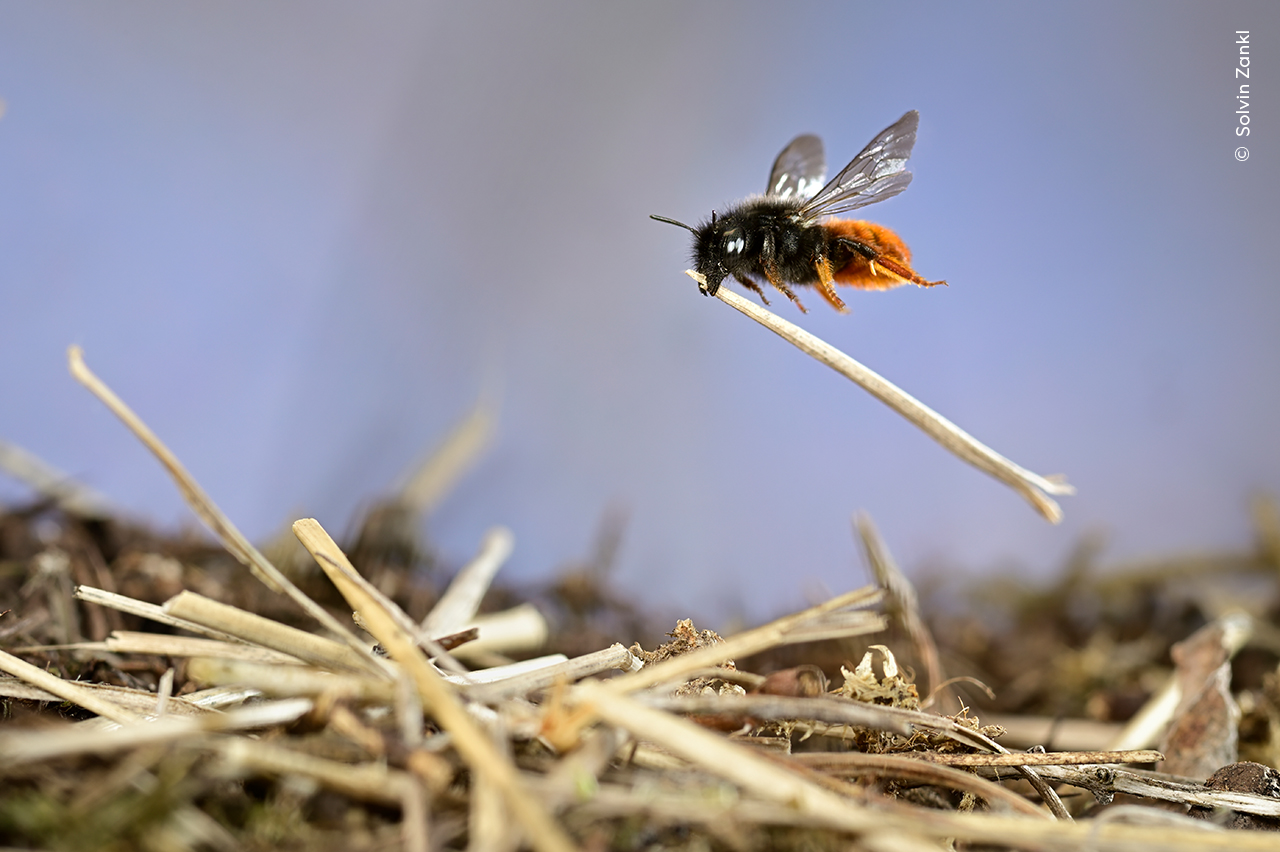Visit the exhibition
Discover the incredible stories of life on our planet through powerful photography and expert insight.
Tickets on sale now.

Solvin Zankl (Germany) carefully watches a two-coloured mason bee build the roof of its nest.
While exploring a favourite haunt in central Germany, Solvin came across several tiny piles of sticks on top of empty snail shells. With only one of the shells being used as nest, he quickly realised that the others were being made as landmarks to help the bee navigate.
So as not to disorientate it, Solvin edged his equipment closer each time the bee left. After two hours, the bee was using his equipment as a landmark as well. Only when it had finished its roof building did he pack up.
Solvin explains that he’s motivated to take pictures of wild bees to ‘raise attention for the diversity of insects that so few of us are aware of. Climate change and our unsustainable use of nature are putting them at severe risk with repercussions for our own life on this planet.’
Two-coloured mason bees use snail shells for egg laying. They pack the shell with pollen and nectar for their larvae, then seal it with grass and sticky saliva. Humans sometimes consider snails to be pests, but this species could not survive without them.
How you can help
Discover the incredible stories of life on our planet through powerful photography and expert insight.
Tickets on sale now.

Germany
Solvin studied Marine Biology at the University of Kiel, Germany, before he began his career as a freelance photographer. His photographic essays about wildlife and science have been internationally published in books and magazines, including GEO, BBC Wildlife Magazine, stern, National Geographic Magazine and many other publications. He’s published three books - Ocean, Deep-Sea and The Biodiversity on an Oak. His main focus is to document animals in their natural habitat, exhibiting their particular character and typical behaviour.
Help us harness the power of photography to advance scientific knowledge, spread awareness of important issues and nurture a global love for nature.